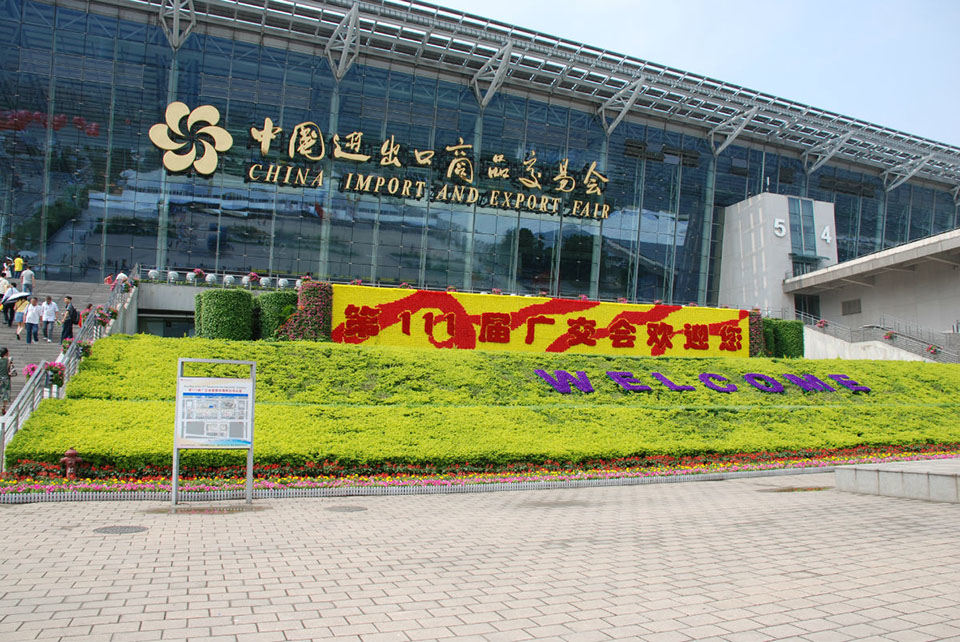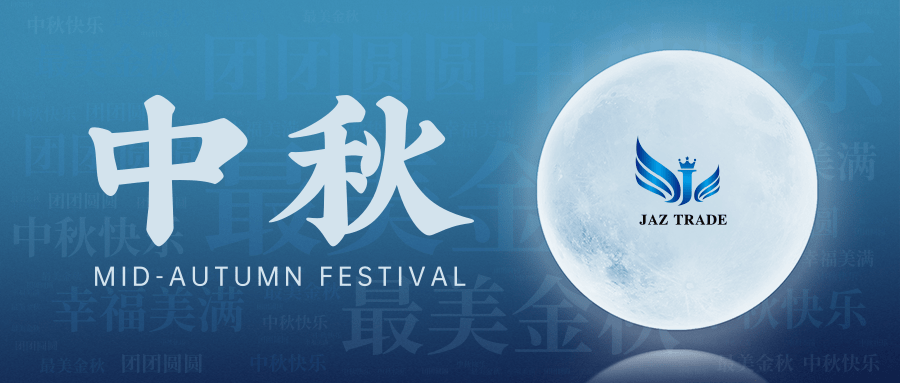Importing from China: A Step by Step Guide
1. Identify your import rights.
When you buy goods from foreign sources, you become the importer. The courier such as DHL/UPS/FedEx will handle everything and deliver to your door if your package is small and used for personal use only or the value is not so big. If so, it will save you a lot of time and money.
But before purchasing commercial goods into your country, as a business or an individual, you will need to identify if you have the import rights.
1.1 If you are from the U.S., your Social Security Number (SSN as individual) or your company Internal Revenue Service Number (IRS EIN as business) will be enough. (Learn more about import into USA)
1.2 If EURO, you will need to register as an economic operator (EORI number).
1.3 If Japan, any person wishing to import goods must declare them to the Director-General of Customs and obtain an import permit after necessary examination of the goods concerned.
1.4 If Canada, you will need to obtain a Business Number issued by the Canada Revenue Agency (CRA) first.
1.5 If Australia, no requirement for importers (companies or individuals) to hold an import licence.
Attention:
Many import regulations only apply to goods imported for commercial – business or resale – purposes. And only the customs authority can make judgment calls about what qualifies as personal use. Several suits that are identical or a number of very similar handbags will have a hard time passing the credibility test as items for personal use.
2. Identify the goods you want to import.
Trade company make money by selling products. Choosing the wrong products means you are losing time and money. If you’re going to be a successful importer, the first thing you need to do is to choose the correct product for resell.
You need something that is going to stand up if you are going to put your name behind it, so find something to be proud about selling. Your products define your business. Your products are your business!
Your main consideration is choosing a product you can sell. In most cases, it would be smart to choose products that yourself would buy or at least know a lot about. The products you sell are fundamental to everything you do. They’ll affect your marketing, your profit margins and the design you use. Logistics and legal restrictions come into play, too.
Make sure you’ve done the research and you know there’s a market or niche for the products you plan to import. In addition, you should know roughly how much your product should cost in order to make an adequate profit selling.
You’d better gather as much information as possible about the goods you intend to import. Obtain descriptive literature, product composition information and, whenever possible, product samples. This information will be crucial when it comes time to determine the tariff classification. The tariff clarification number (HS Code) will be used to determine the rate of duty that will be applied to your goods.
We suggest:
- Go with a product you like – you are passionate about your work
- Go with a product uniqueness – you can sell at a high price
- Go with a product you can ship in large quantities – low shipping cost per unit
Attention:
You’d better not always pursue ‘hot’ products or ‘cheap’ products. Most people get stuck looking for the ‘perfect product’ and never get started at all. There’s no such thing as the perfect product. Every product has challenges to overcome, and profit for those who do. Your job is to find YOUR product and launch it, then grow from there.
3. Ensure the goods you wish to import are permitted into your country.
Certain goods are not allowed to be imported. Different countries have different prohibited products. Also make sure whether the goods you intend to import are subject to any permits, restrictions or regulations by your government.
It is the importer’s (YOUR) responsibility for assuring that the goods comply with a variety of specific rules and regulations. You should avoid products listed below:
- Cheese, Milk, and Dairy Products
- Fruits, Vegetables, and Nuts
- Insects
- Livestock and Animals
- Meat, Poultry and Egg Products
- Plants and Plant Products
- Seeds
- Wood Packing Materials
- Tobacco-Related Products
- Fireworks
- Flammable Fabrics
- Multi-Purpose Lighters
- Foods, Drugs, Cosmetics, And Medical Devices
- Gold and Silver
- Animal Fur
- Trademarks and Trade Names
- Alcoholic Beverages
- Motor Vehicles And Boats
- Branded products
Importing goods that are unsafe, that fail to meet health code requirements, or that violate restrictions could end up costing you quite a bit of money in fines and penalties. At the very least, such goods would be detained, and possibly destroyed.
4. Classify your goods and calculate the landed cost.
Determine the 10-digit tariff classification number for each item you are importing. These numbers along with the Certificate of Origin are used to determine the rate of duty you must pay when importing. Then do the land cost calculation.
Pay attention to the Incoterms, and calculate the total landed cost before you place your order. For example, FOB means adding the following three together.
- Get the product price from the supplier
- Get the shipping charges from freight agent (if to door shipping, that will be enough)
- Get the charges of customs clearance, duty&tax, land transport from landing to your warehouse
It’s critical to get landed cost earlier; no one wants to lose customers (due to estimating costs too high) or earnings (estimating costs too low). If it’s higher than you had anticipated, you can try to look for ways to mitigate the cost elements. If it’s in line with your budget, you can go ahead and begin the process.
You may not know the exact costs of something until after your shipment arrives. In these cases, you need to estimate your costs as accurately as possible. Get estimates from the companies you work with and look at costs from previous shipments to get an idea of how much you’ll have to pay.
Unexpected fees that may come up during shipping will sometimes result in fluctuations in your total landed cost, which is totally normal. While you should determine as many of your costs in advance as possible, an informed estimate can go a long way. Then, once you get your actual, final costs, reconcile them against the estimates you used.
5. Find your supplier in China and place an order.
Place your order with the vendor, shipper or exporter and identify shipping terms that will be used.
Once you have selected your supplier, request a P/I (Proforma Invoice or Quote Sheet) for your prospective purchases to include the harmonized system number, description & value per item. Your P/I must show the weight & the packed dimensions as well as your term of purchase.
What is a proforma invoice? It is a non binding document helping budgeting your future purchases. It is not a purchase order nor does it creates a legal obligation.
Attention:
1. Ensure the supplier will agree to shipping under FOB terms from their nearest port or airport as this will greatly reduce your shipping costs and give you more control over the shipment.
For example, if you were importing from China and the closest port to the supplier is Shanghai, you would request FOB Shanghai terms.
* If it’s trial order or small shipment, EXW will be also ok.
2. Keep in mind shipping by ocean is indeed quite slow, and this means that certainly requires a lot more long-term planning compared to domestic product purchases. Besides, the time required to export goods, including documentation, inland travel, customs clearance, and port or terminal handling for a container of goods can cost upto 7 days.
In general, we recommend place an order at a minimum 3 months before you need your goods at your door.
We suggest NOT:
1. Always looking for the lowest price.
If you come across a quote that is significantly cheaper than the others, raise a red flag. You should know that there is no lowest price in China, only the lower and lower prices. Lowest price always accompanies with high risk, maybe quality, quantity or reputation.
Just find a reliable supplier and grow with them in a healthy way.
2. Failure to clarify product details.
If you aren’t extremely clear to your supplier about your required specifications, there is a big chance you would receive exactly what you didn’t want. Not clear means the factory will make the decision for you based on cost saving.
Ensure you double check the materials and the manufacturing process of each quote so you can feel confident in the products you are purchasing.
Make sure your supplier has totally confirmed every spec of your target product, including the packaging. Sometimes, it’s necessary to send the sample for recheck.
3. Showing distrust towards your supplier.
International trade is based on mutual trust. If you don’t trust your supplier, nobody will look after your production in the factory, and nobody will sincerely help you when trouble happens.
6. Arrange your cargo transport.
There are many costs associated with shipping goods, including container fees, packaging, terminal handling, and broker fees. In order to get a complete picture of shipping costs, each of these factors should be taken into account.
Once happy with the freight quote, you will need to send us or forwarder your supplier’s contact details. We’ll take it from there. We’re going to keep close touch with you and your supplier, make sure your shipment transportation quick and safe.
Check the details:
1. Top 2 things to consider when shipping from China
2. Sea freight
3. Air freight
4. Courier service
We suggest:
1. Always consider that delays might happen during the process, such as goods might not be produced on time, the vessel might not sail as scheduled, goods might be held by the customs. Be prepared and plan accordingly.
Do not expect your cargo would leave the port as soon as completed in the factory. Because it needs at least 1~2 days for your cargo transport from the factory to the port. And the process of Customs Declaration needs your cargo to stay at the port for at least 1~2 days.
Besides, there’s only one route frequency each week in some cases. Missing the day of this week, you will have to wait till next week.
2. Choose a good freight forwarder partner.
Logistics is a highly valued aspect of modern business. Shipping costs include both the direct and indirect costs of transporting products from their point of origin to their destination market.
If they get it right, and choose a good logistics provider; they are guaranteed smooth operations, manageable costs, and continuous cash flow.
If they get it wrong, at the very least they could have rising costs and wastage. At worst, they could be facing a failing business model that has to be eventually shut down. Companies will continue to lose money if their logistics is not managed well.
7. Track your cargo and get prepared for arrival.
Shipping goods internationally takes time. For example, goods shipped from China, on average, take around 14 days to reach the West Coast of United States or 30 days to reach the East Coast.
Normally the consignee will be notified via an arrival notice within 5 days or less of port arrival, by the destination agent listed on the B/L.
When a shipment reaches the U.S., the importer of record (i.e., the owner, purchaser, or licensed customs broker designated by the owner, purchaser, or consignee) will file entry documents for the goods with the port director at the goods’ port of entry.
Entry documents are:
- A bill of lading listing the items to be imported.
- An official invoice that lists the country of origin, purchase price, and tariff classification of the goods imported.
- A packing list that details the imported goods.
- An arrival notice provided by the freight agent.
You will speed up the clearance of your goods through the border if you:
- Invoice your goods in a systematic manner,
- Show the exact quantity of each item of goods in each box, bale, case, or other package,
- Put marks and numbers on each package,
- Show those marks or numbers on your invoice opposite the itemization of goods contained in the package that bears those marks and numbers.
It is always the importer of record’s responsibility to arrange for examination and release of the goods. If problems arise that you need to troubleshoot, you should know the steps your goods go through when being cleared by customs of your country.
8. Obtain your shipment.
When the goods arrive, make arrangements for your customs broker to clear them through customs (and quarantine if applicable). If everything goes well, it’s your rights to pick up your shipment.
If you choose our to-door service, you can just wait for your shipment arrived at your designated address.
Once you have received your goods and have ascertained the quality, packaging, instructions and labels, you’d better send an email to your supplier and inform them that you have received your goods but have not reviewed them. Tell them you will contact them once you review the items and hopefully, make another order.
Summary
Implementing what you are learning is the only way to succeed in business. Follow these tips and do your research and you can benefit from importing from China.
Step forward takes a lot of hard work. When you’re first starting out, it’s easy to completely overwhelm yourself by planning the entire future of your empire. Most get stuck on tiny details. You instead need to wake up every day and take the next smallest step you can to achieve that dream.
Don’t be afraid to make mistakes. Through making mistakes you learn how to overcome them the next time and make even more money. Mistakes are a part of entrepreneurship. Learn from others, and learn from your own as well!
If this guide intrigues you, at least try to put this stuff into action. There’s money to be made and no better time than acting now. Wish you a great success in international trade. Please feel free to let us know if we can assist you in any way.




